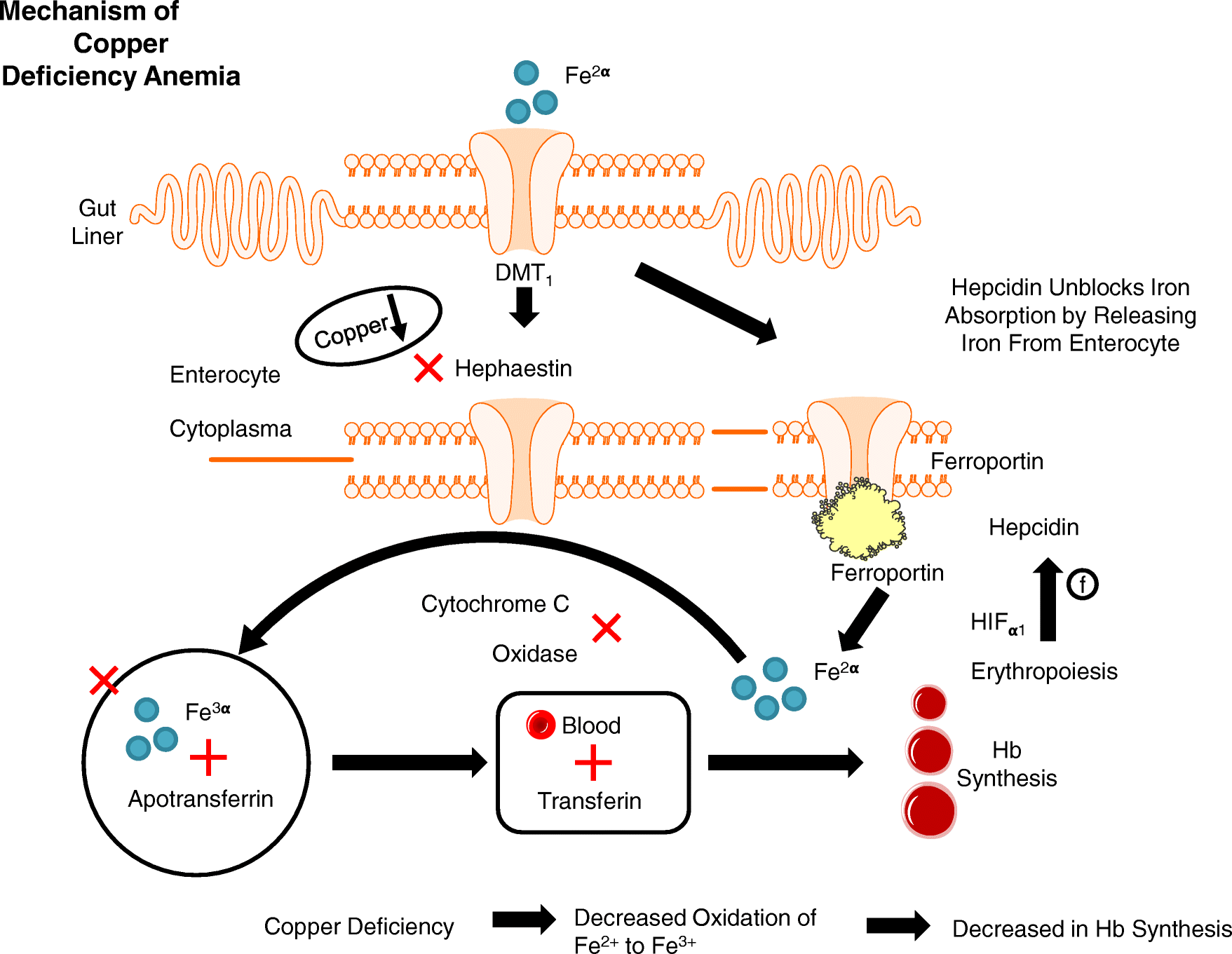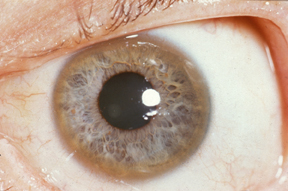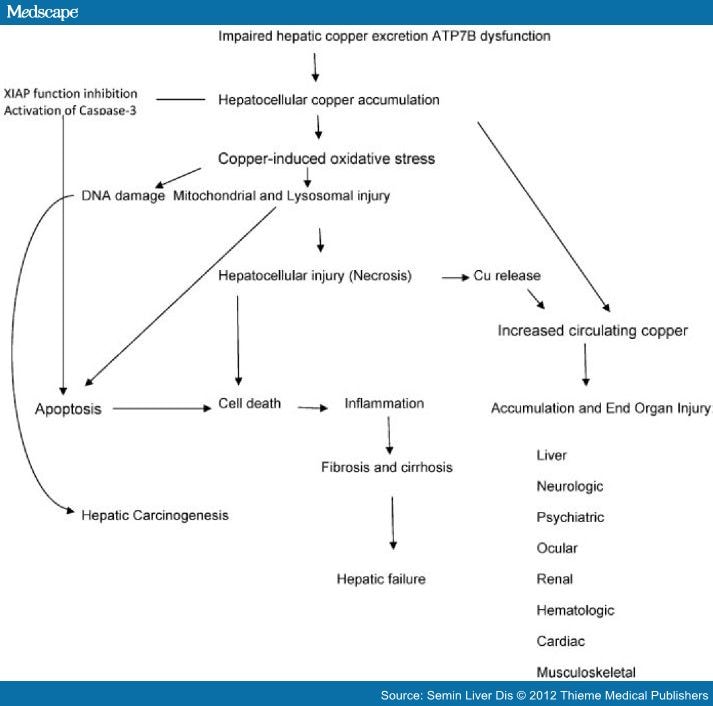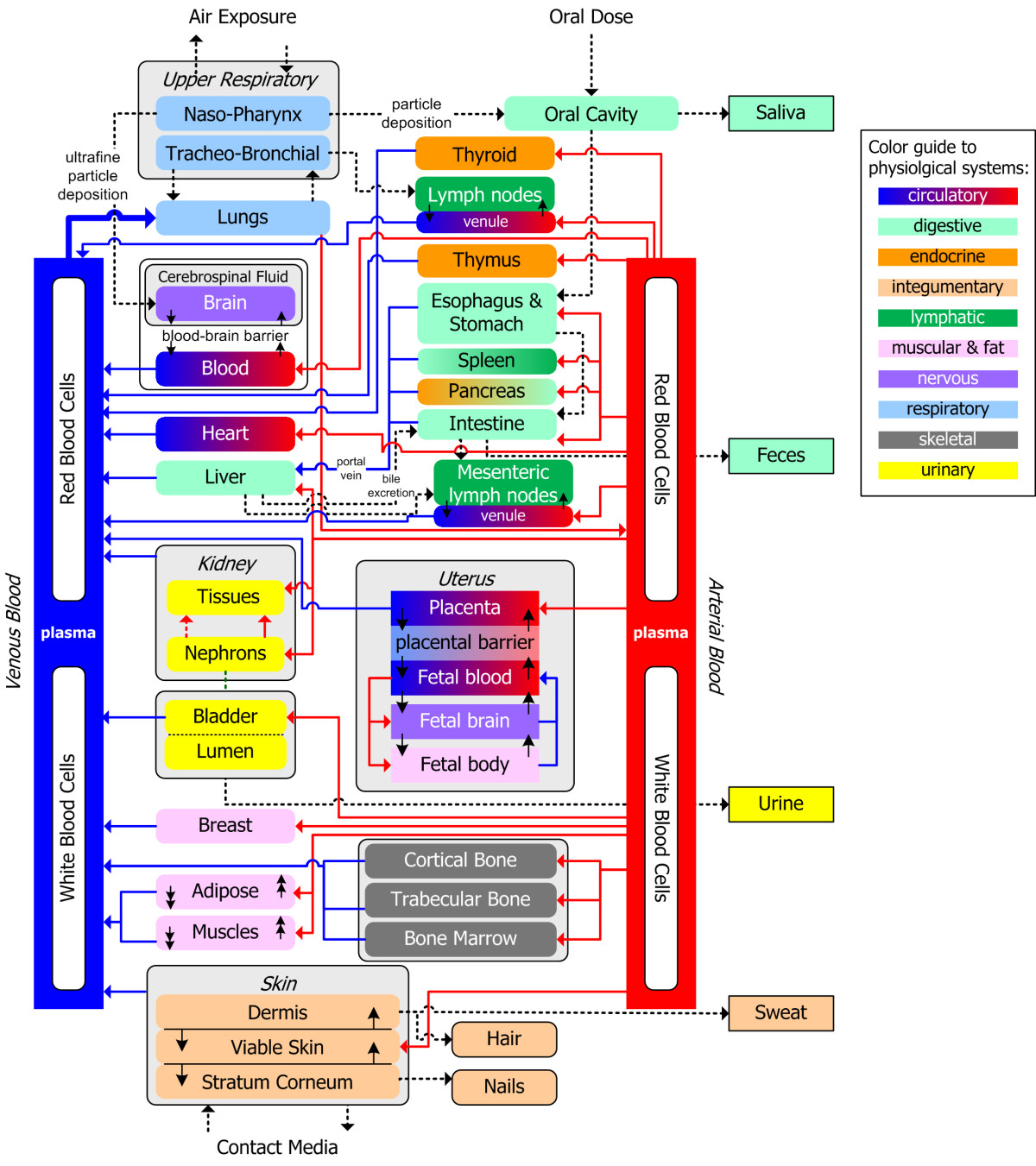![]()
The Basics
Copper, an essential metal that is vital to your health, is found in a wide range of foods, from meat to vegetables. Good sources include:
Some copper-rich foods include:
- shellfish, such as crabs or lobster
- organ meats, such as liver
- seeds and legumes, such as sunflower seeds, cashews, and soybeans
- beans
- peas
- potatoes
- green vegetables, such as asparagus, parsley, or chard
- whole grains, such as oats, barley, or quinoa
- dark chocolate
- peanut butter
Consuming copper-rich food and taking dietary supplements can raise blood levels. This can result in acute copper toxicity (acquired copper toxicity) in which blood copper levels spike acutely. The EPA does not classify copper as a human carcinogen as there are no adequate human or animal cancer studies.
Copper is unique as it is involved in a variety of redox reactions and it functions in various biologic processes. Examples of copper’s involvement include copper-dependent enzymes:
- Cytochrome-C oxidase: mitochondrial electron transport chain
- Cu/Zn-superoxide dismutase: free radical detoxification
- Hephaestin: ferroxidase required in intestinal iron absorption
- Serum ceruloplasmin: circulating ferroxidase
- Protein-lysine-6 oxidase: collagen and elastin crosslinking
- Blood clotting factors V and VIII
Cupric oxide results from one atom of copper binding to an oxygen molecule vs two copper atoms bound to the oxygen atom (cuprous oxide). Cupric oxide is considered “fully oxidized,” while cuprous oxide is still in an active state.
![]()
Image from
Toxicokinetics
The complete “TOXICOLOGICAL PROFILE FOR COPPER” from Agency for Toxic Substances and Disease Registry can be found here.
A quick search of PubMED resulted in 4933 hits for peer-reviewed articles with the search terms of ‘Copper and Toxicokinetics.’ The modeling of copper toxicity is complex and varies based on the species of interest. These models are very complex as demonstrated in the graphic below.
Image from
Mechanism of Action
- Below is the mechanism of action of sideroblastic (copper-induced) anemia. The deficiency results in a decreased oxidation of FE2+ to Fe3+ which in turn results in a decrease in hemoglobin synthesis.

Image from
Target organ(s)
- Includes CNS, immune, blood, bone, cardiac, and skin
- Zinc-induced copper deficiency results from a competitive relationship between zinc absorption and copper absorption in GI tract. This process is mediated metallothionein. The table below shows neurologic deficiencies identified in bariatric patients that have impaired GI absorption that results in nutrient deficiencies.

Image from
Signs and symptoms of toxicity
Below are several of the known signs and symptoms of copper toxicity in humans.

Image from

A Kayser-Fleischer ring, copper deposits found in the cornea, is an indication the body is not metabolizing copper properly.
Genetic susceptibility or heritable traits
- Wilson’s disease results from a defective protein is characterized by impaired copper metabolism. Signs and symptoms range from asymptomatic to hepatic failure, chronic liver disease with or without cirrhosis, neurological, and psychiatric manifestations. Below is a figure that graphically demonstrates how protein dysfunction leads to copper accumulation.

Here’s a great review article on Wilson’s Disease: Rodriguez-Castro KI, Hevia-Urrutia FJ, Sturniolo GC. Wilson’s disease: A review of what we have learned. World J Hepatol. 2015;7(29):2859–2870. doi:10.4254/wjh.v7.i29.2859
How’s copper toxicity treated?
Some treatment options for acute and chronic copper toxicity include:
- Chelation.
- Chelators are medications injected into your bloodstream. The medication helps bond all the copper in your blood together so it can make it to your kidneys for filtration and release from your body through pee.
- Gastric lavage (stomach pumping).
- This procedure removes copper you ate or drank directly from your stomach using a suction tube.
- Medications.
- Certain medications can treat copper toxicity, often along with other treatments. Some oral medications include penicillamine (Cuprimine) or dimercaprol (BAL in oil).
- Hemodialysis.
- This process removes blood from your body and filters out waste using a device that mimics your kidneys. The filtered blood is then returned to your body.
Biomarkers
There are established biomarkers for copper exposure. This review article investigates the potential biomarkers of dermal copper exposure: Li H, Toh PZ, Tan JY, et al. Selected Biomarkers Revealed Potential Skin Toxicity Caused by Certain Copper Compounds. Sci Rep. 2016;6:37664. Published 2016 Nov 28. doi:10.1038/srep37664
Essentiality and deficiency
 Image from
Image from
-
- Common signs and symptoms of copper deficiency include fatigue and weakness, frequent sickness, weak and brittle bones, problems with memory and learning, difficulties walking, increased cold sensitivity, pale skin, premature gray hair, and vision loss.
- Copper is an essential element with numerous benefits in the human body. It is critical from normal CNS and brain function. Copper’s role in the vascular system is diverse in that it promotes elasticity of vessels, promote healthy muscle tissue, and deficiency can lead to anemia. It also has key roles in the maintenance of bone, skin, and even the immune system as depicted below.
Image from
Here’s a great summary image for your reference from OSUMEX.


